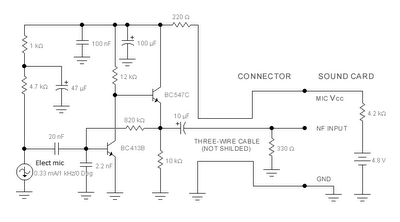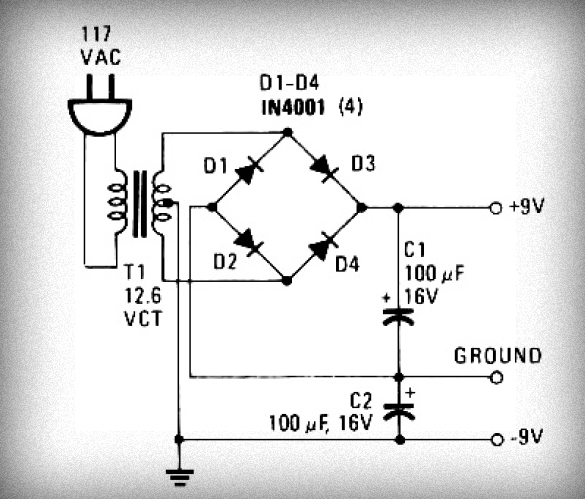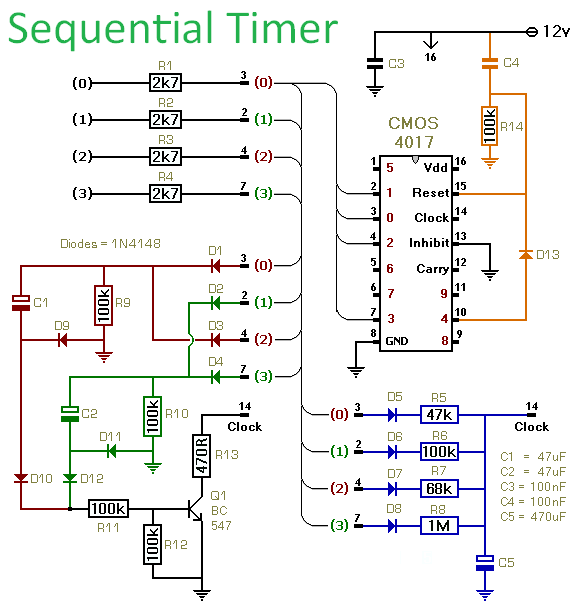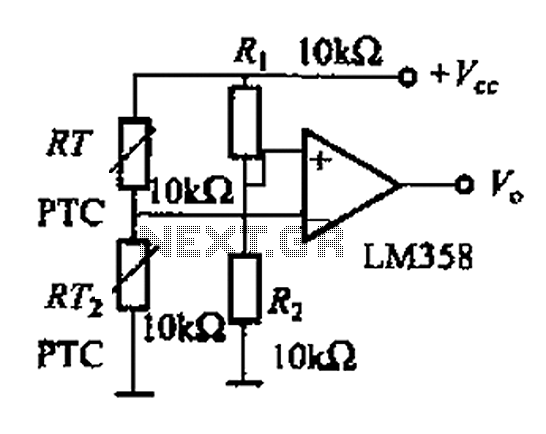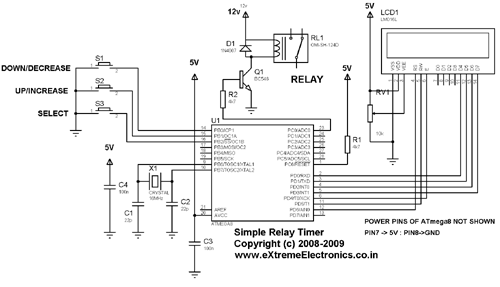
Timer 1 Minute To 400 Hrs Circuit

This ultra wide range timer utilizes a 555 timer as its core component, along with two 4017 decade counters and a 4020 binary counter that function as frequency dividers, which can be selectively switched in and out. Additionally, the circuit includes a single-pole three-throw (SP3T) range switch.
The circuit design begins with the 555 timer, configured in astable mode to generate a continuous square wave output. The frequency of this output can be adjusted by varying the resistance and capacitance in the timing network. The output frequency from the 555 timer serves as the input for the two 4017 decade counters. Each 4017 counter divides the frequency by ten, allowing for a broad range of output frequencies depending on the configuration of the circuit.
The 4020 binary counter is employed to further divide the frequency, providing additional versatility in the timing range. By using the SP3T range switch, the user can select which counters are active in the circuit, effectively enabling the selection of different frequency ranges. This feature allows for customized timing applications, making the circuit suitable for various electronic timing tasks.
The output from the last counter can be used to drive other components or circuits, such as LEDs for visual indication or additional logic circuits for further processing. Careful consideration should be given to the power supply requirements and the load connected to the output to ensure reliable operation across the entire frequency range. Overall, this ultra wide range timer circuit provides a flexible and efficient solution for timing applications in various electronic projects. This ultra wide range timer uses a 555 timer base, two 4017Bs and a 4020B that act as frequency dividers that can be switched in and out. SI is a SP3T range switch.
The circuit design begins with the 555 timer, configured in astable mode to generate a continuous square wave output. The frequency of this output can be adjusted by varying the resistance and capacitance in the timing network. The output frequency from the 555 timer serves as the input for the two 4017 decade counters. Each 4017 counter divides the frequency by ten, allowing for a broad range of output frequencies depending on the configuration of the circuit.
The 4020 binary counter is employed to further divide the frequency, providing additional versatility in the timing range. By using the SP3T range switch, the user can select which counters are active in the circuit, effectively enabling the selection of different frequency ranges. This feature allows for customized timing applications, making the circuit suitable for various electronic timing tasks.
The output from the last counter can be used to drive other components or circuits, such as LEDs for visual indication or additional logic circuits for further processing. Careful consideration should be given to the power supply requirements and the load connected to the output to ensure reliable operation across the entire frequency range. Overall, this ultra wide range timer circuit provides a flexible and efficient solution for timing applications in various electronic projects. This ultra wide range timer uses a 555 timer base, two 4017Bs and a 4020B that act as frequency dividers that can be switched in and out. SI is a SP3T range switch.
